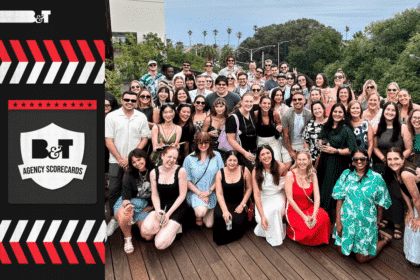In this guest post, Scott Rigby (pictured below), head of digital transformation at Adobe, delves deeper into the findings from company’s recent Creative Pulse Survey 2017 to figure out why Aussie and Kiwi creatives are lagging behind the rest of the Asia-Pacific (APAC) region when it comes to developing a CX program.
Customer experience (CX) programs may be marketing’s current favourite toy, but Australia and New Zealand’s (ANZ’s) creative professionals are trailing their APAC counterparts when it comes to engaging (or even planning to engage) in their design.
According to Adobe’s Creative Pulse 2017 survey, not only have just 34 per cent of ANZ creatives designed a CX program in the last 12 months – admittedly not far behind APAC’s 36 per cent – but, more significantly, only 30 per cent have plans to develop one, trailing APAC’s 37 per cent.
This is curious, given the emphasis currently being placed on the customer experience, which is positioned as the number one investment by businesses across APAC. Earlier this year, the 2017 Digital Trends report conducted by Adobe and Econsultancy found that optimising the customer experience was seen as the single most exciting opportunity among marketers and e-commerce professionals in 2017.
One brand already reaping the benefits of this optimisation is Qantas, which has worked to deliver improved and more personalised experiences on and off the plane. Qantas has adopted a number of components from Adobe’s Marketing Cloud, including Experience Manager, which has been used to re-platform and personalise Qantas.com.
Qantas is also using data to improve customer interactions on the front line, equipping flight attendants with customer insights that enable them to celebrate landmarks such as birthdays, much to their customers’ delight.
So, when the benefits of CX programs are already being felt, why are our creatives trailing their APAC neighbours? And it’s not just CX programs to which this applies; 65 per cent of ANZ creatives have not only not designed a CX program or project, they also haven’t designed a ‘connect everywhere’ customer solution or IOT solution, compared with 56 per cent in APAC.
Perhaps this stems from a need for more training. Currently, ANZ creatives are not matching their APAC colleagues when it comes to updating their skills, with only 34 per cent upskilling every six months – quite a way behind APAC’s 45 per cent. In a rapidly evolving marketplace, the ability to pick up new skills is more important than ever and can affect competitiveness, but brands can help their creatives rise to the challenge by allocating time for regular training rather than leaving it up to each individual employee to polish up their skills.
ANZ’s lower training statistics could be a symptom of a more relaxed attitude among creatives on both sides of the Tasman. This is demonstrated by the fact that 60 per cent of ANZ creatives are not concerned about the potential impact of artificial intelligence or machine learning. In comparison, within APAC this figure drops to 50 per cent, and while the other end of the spectrum sees 13 per cent of APAC creatives claiming to be extremely concerned, only six per cent of ANZ respondents share the same level of apprehension.
This relaxed approach may need a rethink in the long-run. Creative Pulse 2017 found that 60 per cent of ANZ organisations are placing customer experience at their centre – more than almost any other APAC market (India’s 65 per cent being the lone exception). With CX programs becoming such a focus, ANZ brands can fast track their implementation by ensuring creatives have the training needed to meet this demand, enabling them to then deliver the kinds of experiences customers not only want, but have come to expect.









